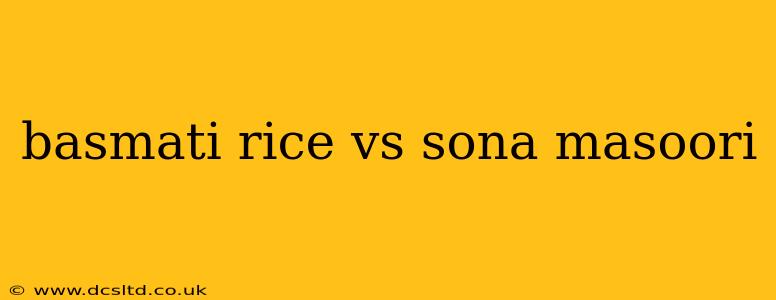Choosing the right rice can significantly impact the flavor and texture of your dishes. Two popular varieties often found side-by-side are Basmati and Sona Masoori. While both are long-grain varieties, they offer distinct characteristics that cater to different preferences and culinary applications. This detailed comparison will help you understand the key differences between Basmati rice and Sona Masoori rice, enabling you to make an informed decision for your next meal.
What is Basmati Rice?
Basmati rice, originating from the Indian subcontinent, is renowned for its long, slender grains and distinct aromatic fragrance. Its unique aroma is attributed to the presence of specific volatile compounds produced during the rice's growth and processing. When cooked, Basmati rice becomes fluffy and light, with each grain separating nicely. This makes it ideal for dishes where individual grains are desired, such as pilafs, biryanis, and as an accompaniment to curries. Its delicate flavor allows it to pair well with a wide range of spices and sauces.
What is Sona Masoori Rice?
Sona Masoori, also known as Sonamasuri, is another popular long-grain rice variety. While not as aromatic as Basmati, it offers a slightly nutty and sweet flavor. Its grains are slightly shorter and wider than Basmati, resulting in a slightly firmer texture when cooked. Sona Masoori rice tends to be more sticky than Basmati, making it a preferred choice for dishes that benefit from a slightly clingier texture, such as South Indian rice preparations, idli, and dosa batter.
Basmati Rice vs. Sona Masoori: Key Differences
| Feature | Basmati Rice | Sona Masoori Rice |
|---|---|---|
| Grain Length | Very long and slender | Long, but slightly shorter & wider |
| Aroma | Strong, distinct aromatic fragrance | Mild, slightly nutty aroma |
| Texture | Fluffy, light, non-sticky | Slightly firm, less fluffy, sticky |
| Flavor | Delicate, subtle | Slightly nutty and sweet |
| Cooking Time | Slightly longer | Slightly shorter |
| Cost | Generally more expensive | Generally less expensive |
Which Rice is Better for You?
The "better" rice depends entirely on your culinary preferences and the intended dish.
-
Choose Basmati if: You prioritize aroma, a fluffy texture, and distinct separation of grains. It's perfect for dishes where the rice is a supporting player but needs to maintain its individual grain structure.
-
Choose Sona Masoori if: You prefer a slightly firmer, stickier texture and a subtly sweet flavor. It's excellent for dishes where the rice is a more integral part of the overall texture and flavor profile.
What is the Difference in Cooking Time Between Basmati and Sona Masoori Rice?
Basmati rice generally takes a little longer to cook than Sona Masoori rice. However, the precise cooking time varies depending on the brand, the type of cooking method (e.g., stovetop, rice cooker), and the desired level of doneness. Always refer to the package instructions for the most accurate cooking time for your specific rice.
Is Sona Masoori Rice Good for Health?
Both Basmati and Sona Masoori rice offer nutritional benefits. They are good sources of carbohydrates, providing energy, and contain some minerals. However, the nutritional content can slightly vary depending on the specific variety and growing conditions. Like most rice varieties, both are relatively low in protein and fiber.
Is Basmati Rice Gluten-Free?
Yes, both Basmati and Sona Masoori rice are naturally gluten-free. However, always check the product label to ensure there's no cross-contamination during processing.
Conclusion
Ultimately, the choice between Basmati and Sona Masoori rice comes down to personal preference. Both varieties offer unique characteristics that make them suitable for different dishes and culinary styles. By understanding these differences, you can select the perfect rice to enhance your culinary creations.
